This post is also available in: Italiano (Italian)

Solar energy plays a fundamental role in our vehicle and we definitely can not do without the plant we have. Being currently enthusiastic about the freedom that solar energy is giving us, we decided to write an article describing its functioning. The purpose of this text is also to answer many of the questions that were asked of us in the first months of our journey. The doubts we are asked are the most disparate, so we will try to give the most answers.
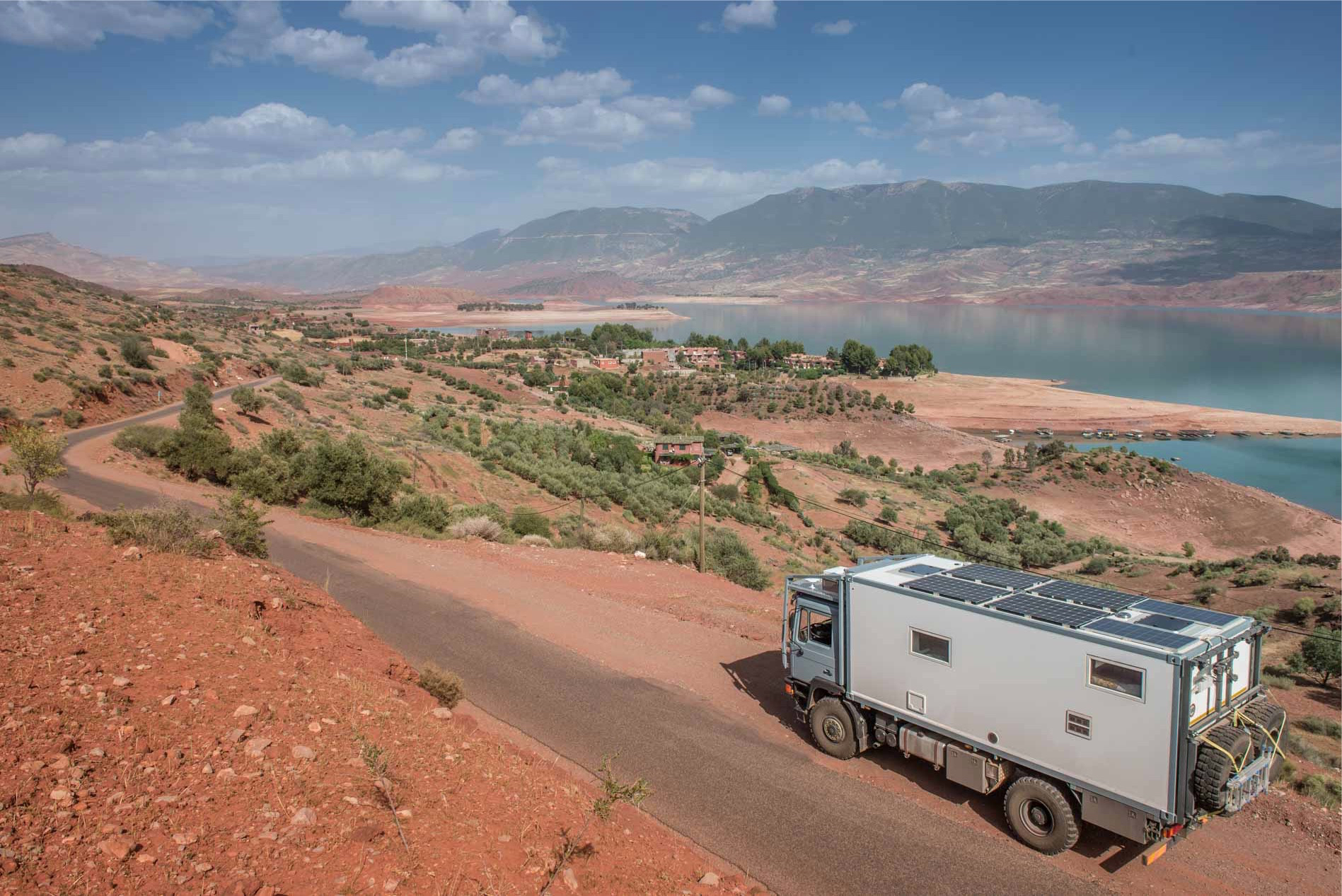
Who and why must (or should not) install a solar energy system on a recreational vehicle
Let’s start by saying that we do not all have the same needs, depending on how we use each of our vehicles creates conditions for which the plant must have certain characteristics or not. there is also to consider the eventuality, which altogether exists, in which the plant itself could be inconvenient in terms of beneficial costs. Occasional users of the vehicle fall into this condition and normally stay in campsites or areas where it is possible to use electricity from the electricity grid.
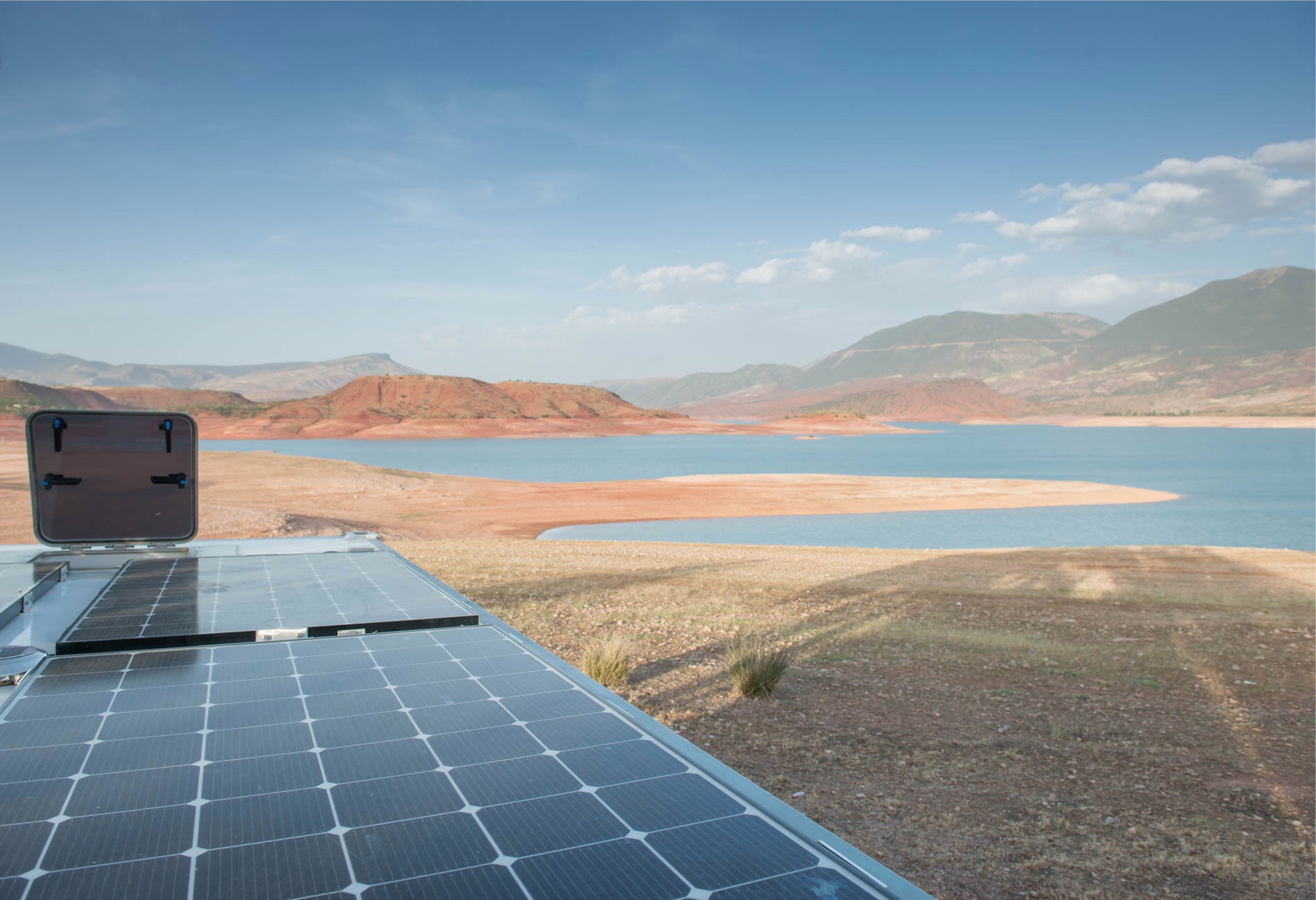
Basically you have to start thinking about a solar energy plant who wants more independence, and we point out that this independence carries a considerable cost savings in the case in which it is able to do without 100%. The costs involved are those related to areas / camps that can supply energy. Of course it is useless to think that we are 100% independent because of the simple fact that we have a good solar energy system, but we do not have water or adequate capacity to contain waste liquids for several days of isolation.
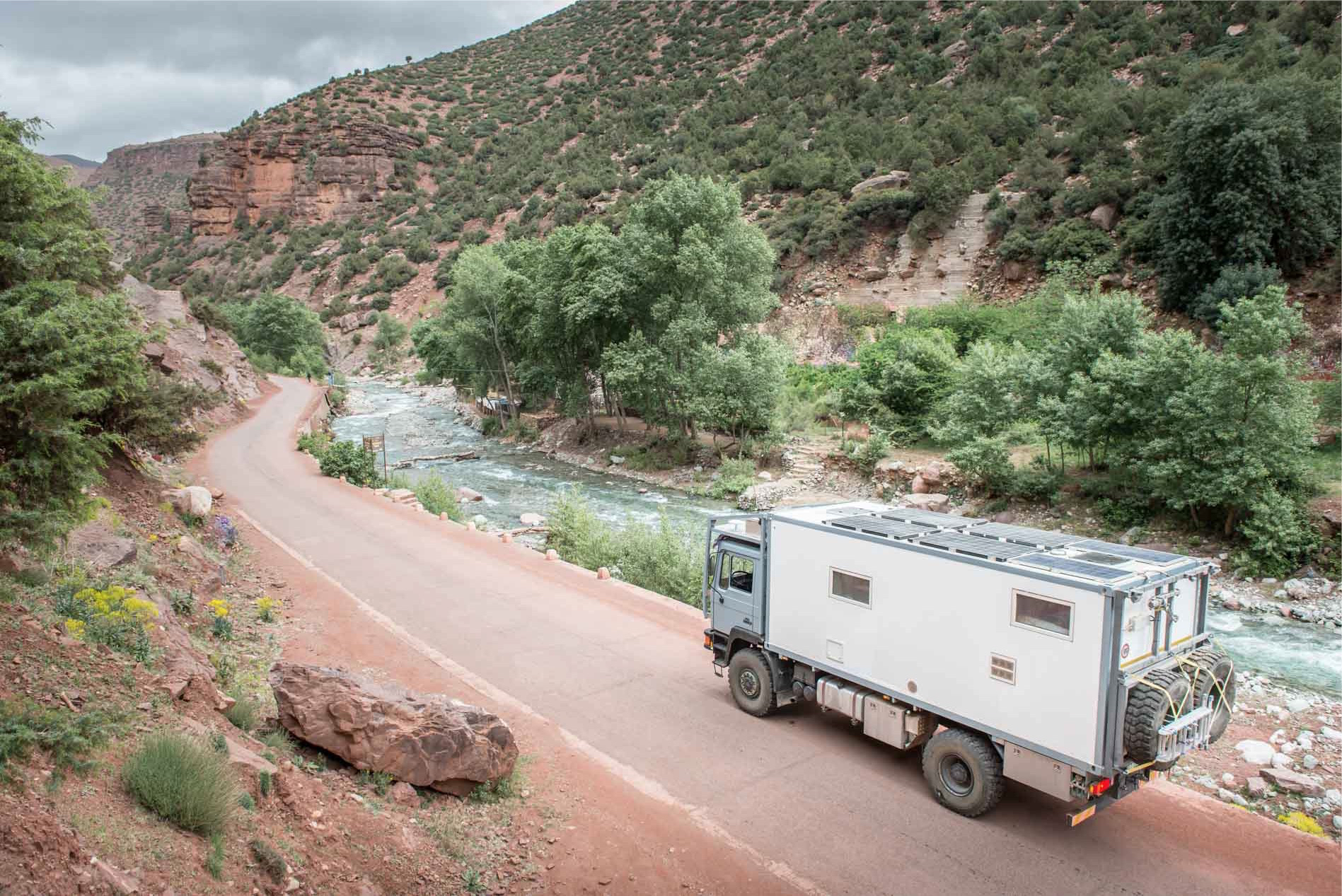
Another important factor inherent in the motivation that may lead to the installation of a plant is given by the goals you want to reach. Let’s take some examples: those who particularly enjoy visiting cities will often find themselves in unfavorable conditions for a solar system. Buildings, antennas and parks do not facilitate the work of photovoltaic modules and this must be taken into consideration before spending money unnecessarily. As well as those who prefer journeys to places with extreme weather conditions, they may find themselves equally inadequate in order to exploit their own solar energy system. Those who instead assume a 360-degree use of their vehicle, such as those who are preparing for a long journey, will have to deal with the correct sizing.
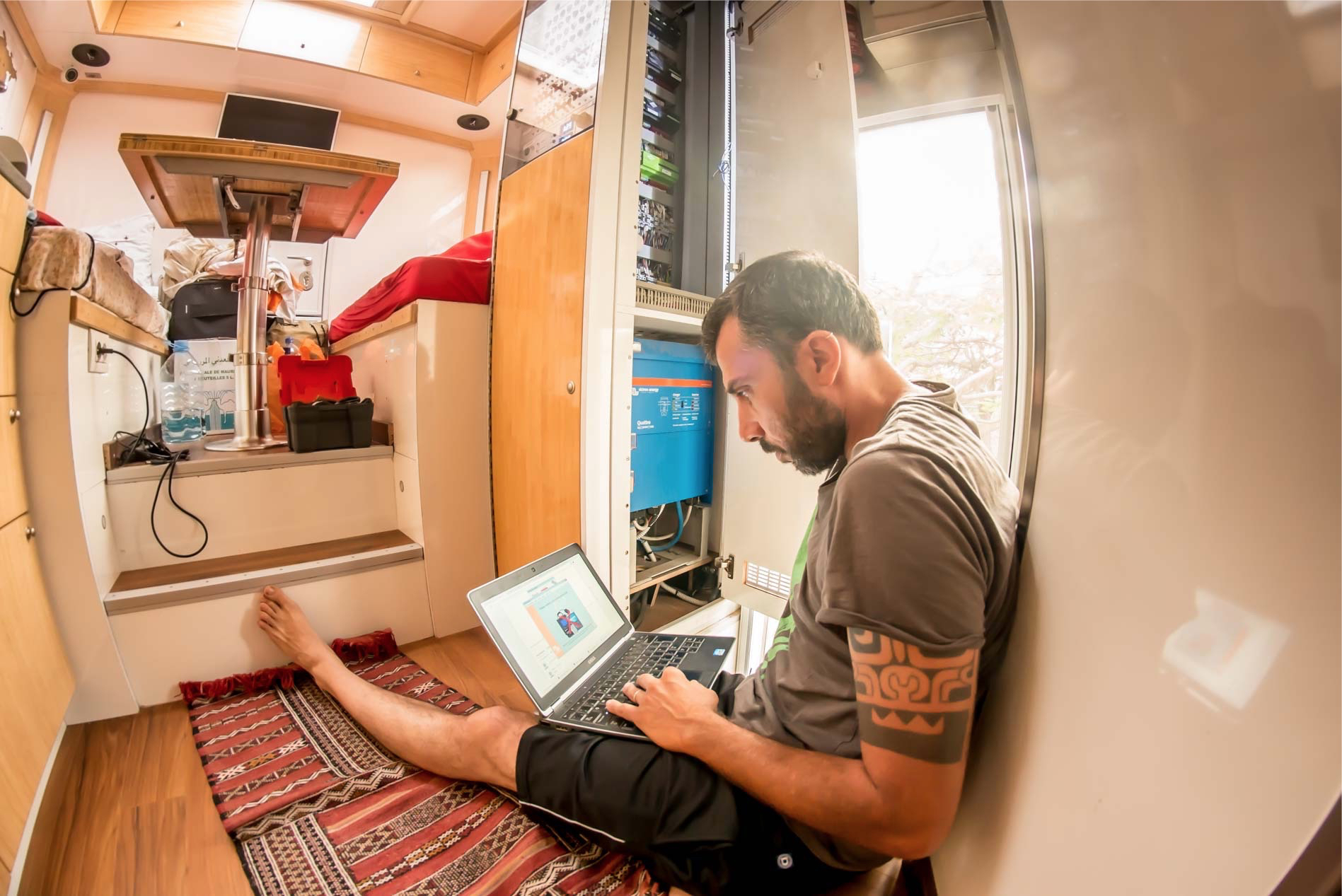
Last but not least, the possibility that one’s own style of vehicle use may change is due to the fact that, thanks to solar energy, it is possible to avoid being constantly connected to the current. As part of this article we will perform calculations that take into account the most extreme situation, one in which the user – as we are doing – needs total independence from the electricity grid. This serves to make the sizing mechanism understand, which of course can be limited in case of a sporadic use of locations where it will be possible to recharge.
Calculate how much energy you need
To understand what type of system to install, how many panels, how many batteries, what inverter, you will first have to understand how much energy you need. To perform this measurement, in addition to the datasheets of the devices available (fridge, lights, computers, mobile phones, water pumps, etc.), so-called battery monitors, instruments that remain of fundamental importance during the normal use of the electrical system of your vehicle.
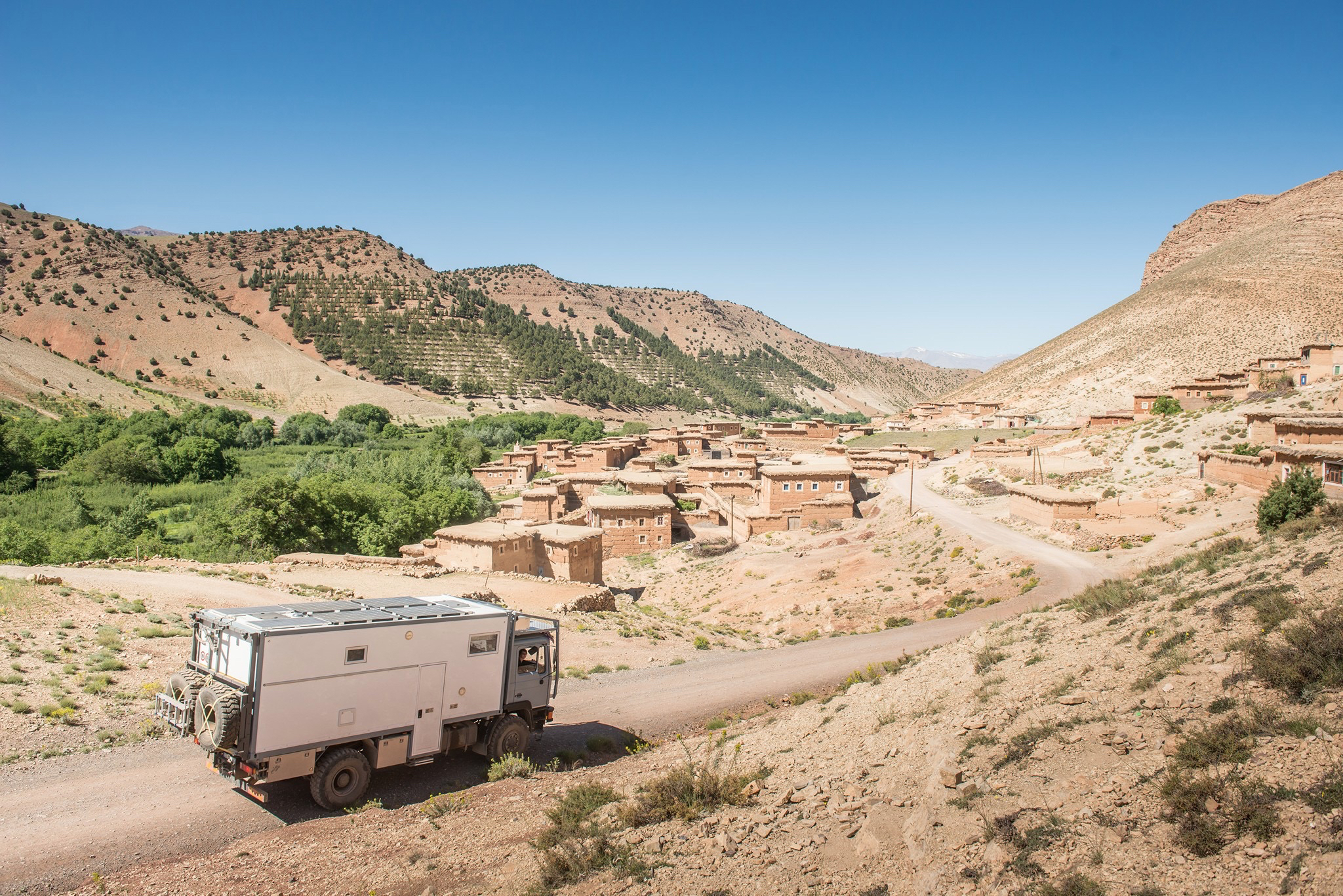
Before throwing the eye to the market of photovoltaic panels it will be good to provide a minimum of technical analysis related to their consumption. In the market there are different types of battery monitors, from the most stupid that simply measure the voltage of the batteries to those more useful instead indicate exactly the amount of ampere input and output from the same. A battery monitor that directly indicates the current Watt input and / or output is even more intuitive and easy to use. The market offers a wide choice, as far as we are concerned, the choice of the Battery monitor went on a Victron Energy product called BMV-702. This measuring instrument offers several very important functions for constantly monitoring the performance of the battery bank, including its temperature.
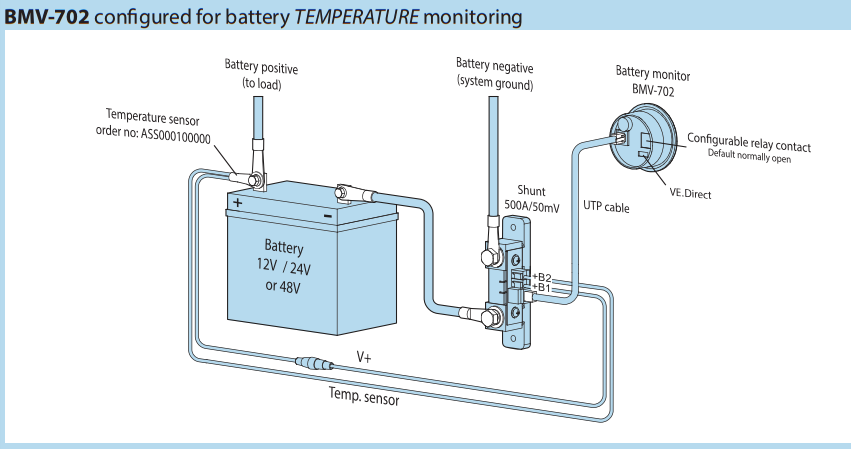
Why are Watt important? Because they are the power necessary to perform an electrical “job”, that is, the energy that is needed. This is the point where you generally start to get confused because normally, in the world of devices related to the world of recreational vehicles, amps are often used to indicate their consumption. Why does this generate confusion? Banally because on our vehicle we will use both direct current and alternating current devices. The alternating current carries much more energy than the continuous one, a 12-volt circuit about 18 times less than one at 220. For example a 2-amp led bulb powered at 12 volts will need 24 watts of power. The 2 Amp led bulb powered instead of 220 volts will need 440 watts. A big difference! In order to calculate our need for power expressed in Watts we will have to use the fundamental rule:
- Watt = Volt * Amp
The batteries
We will not go into the details of the different types of batteries on this occasion, but to think about any solar system it is of fundamental importance to understand how much reserve energy is available. To understand the importance of this data, let’s talk about a typical Camper installation, which includes a pair of 12 Volt 100 Ampere GEL batteries put in parallel to obtain a 12 volt bench and a total of 200 amps. How much energy do you have?
- 12 (Volt) * 2 (number of batteries) * 100 (Ampere) = 2400 Watt
This of course is a theoretical fact, which provides batteries in perfect condition and fully charged. It is very important now to understand that not all batteries are the same, but we are thinking about the GEL (NB slightly more performing than the most common AGM) that on average have a duration of about 1800 cycles if discharged at most 30% (note that the cycles become 750 if the discharge is 50%).
Now, wanting to make our batteries last a bit, we calculate 30% of 2400 watts, thus obtaining 720 Watts that become the real power at our disposal in order not to stress our investment
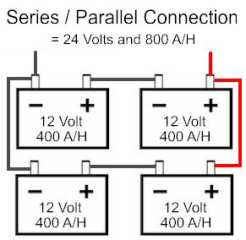
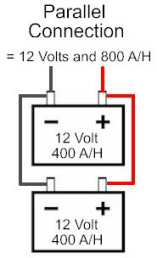
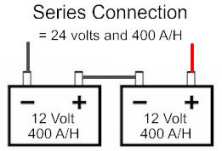
The consumption
But let’s take a few examples of consumption to make better the idea of how often your own is underestimated, especially in relation to your battery bank which, as seen in the previous paragraph, play a fundamental role in the calculation of daily energy consumption.
-
A 100-liter Dometic refrigerator can consume an average consumption of around 150 watts per day (of course this depends on many factors.
-
A common MacBook computer has a power supply that consumes 85 watts and requires about two hours of operation in order to fully recharge the batteries, this means 170 watts of total consumption
-
A couple of hours a day of reading light with an average consumption of 10 watts
-
About ten minutes of use of the autoclave pump with an average consumption of 20 watts.
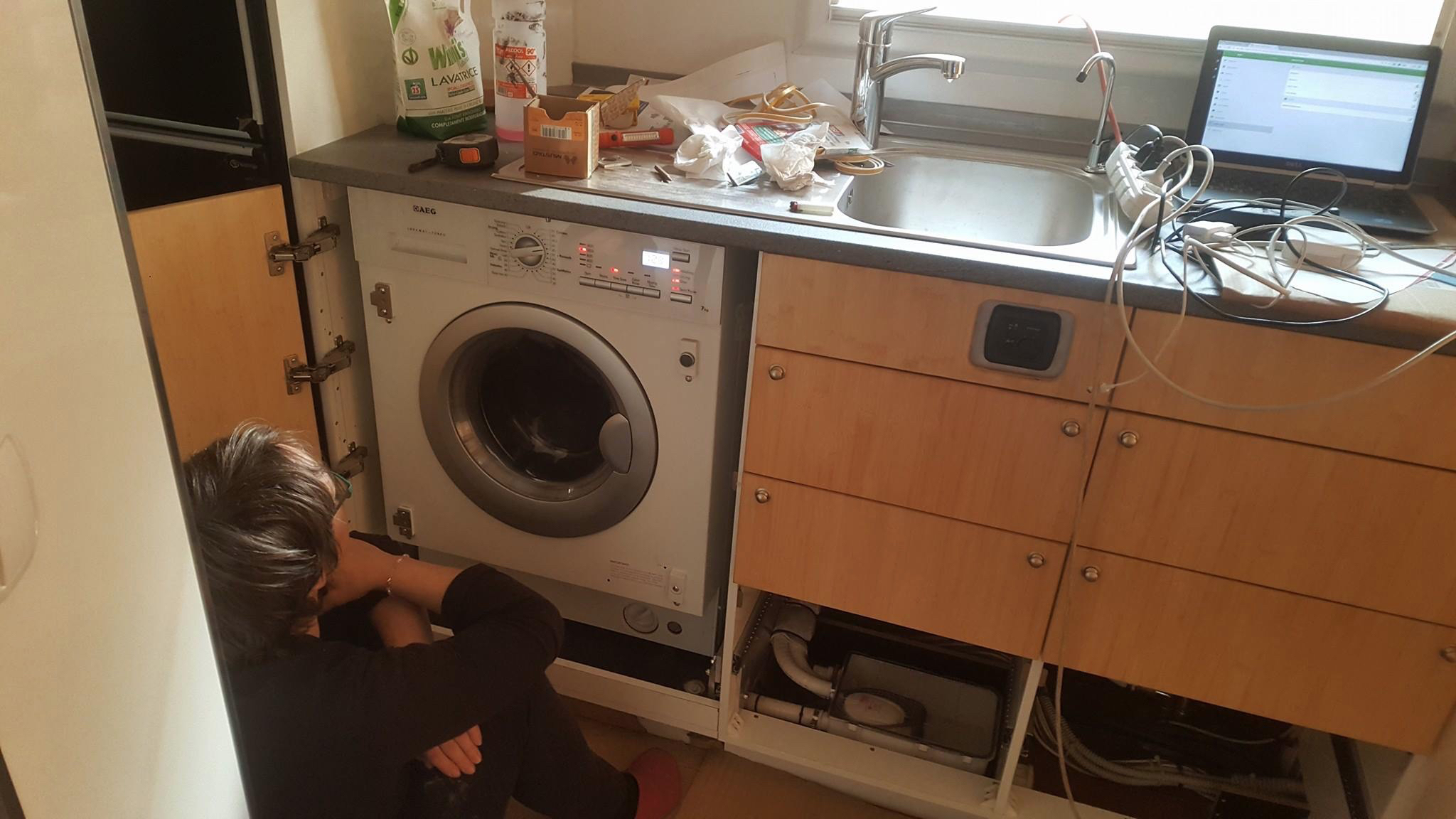
Stopping at these few values we get a total daily consumption of 435 watts, which allows us to stay within our daily capacity of 720 watts previously calculated. But what would happen if we turned on a phon of 2000 Watt power for 10 minutes? would bring our daily consumption to 400 + 435 equivalent to a total of 835 watts that would take us out of our daily availability. We therefore understand how important it is to know your daily consumption in order to make the correct calculations of sizing the solar system but also to preserve its investment in batteries.These calculations must also serve to make us understand one thing, namely that – even omitting the additional consumption of the hair dryer – we will need to charge the batteries practically every day so as not to consume more than what we have available daily . It is not clear? We do this calculation:
- 435 Watt * 2 (days without recharge) = 870 Watt
As we said with our bench we will have available 720 watts of power before having to recharge the batteries, then consuming 870 watts (not having recharged) we will go into deficit of 150 watts.
Solar panels
We do not want to dwell too much on the various types of panels available today, let’s just say that a monocrystalline module has a better performance than a polycrystalline one.
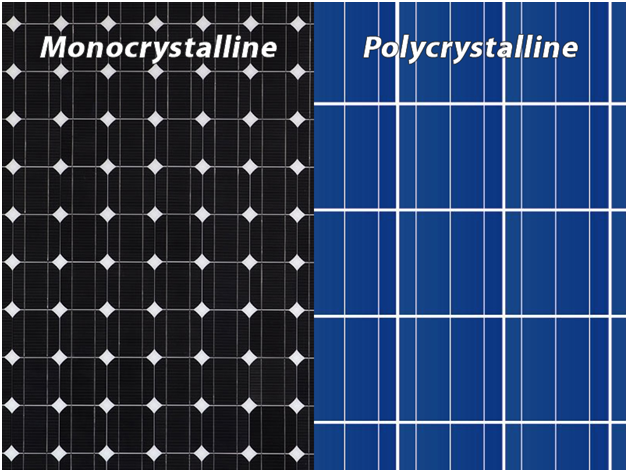
What does it mean? It should be kept in mind that the value in Watt that describes the power of a solar panel is a theoretical value, in the reality of things we must consider as plausible 80% of the plate value. This value may be slightly better in a monocrystalline module. But remember that reasoning in terms of independence you must always work underestimating the power available, so a monocrystalline module is fine, but do not use it as an excuse to buy a panel in less. Another parameter to know when talking about solar energy is that on average a panel will deliver the maximum of its power for a period hardly more than five hours a day (of course this depends on location, temperature, weather). To this important factor it should be added that the days are not always ideal, sometimes it rains, sometimes it happens to be parked under the branch of a tree. In short, we will not always be in the best condition to squeeze every Watt from our panels, often we should be content with just a little.
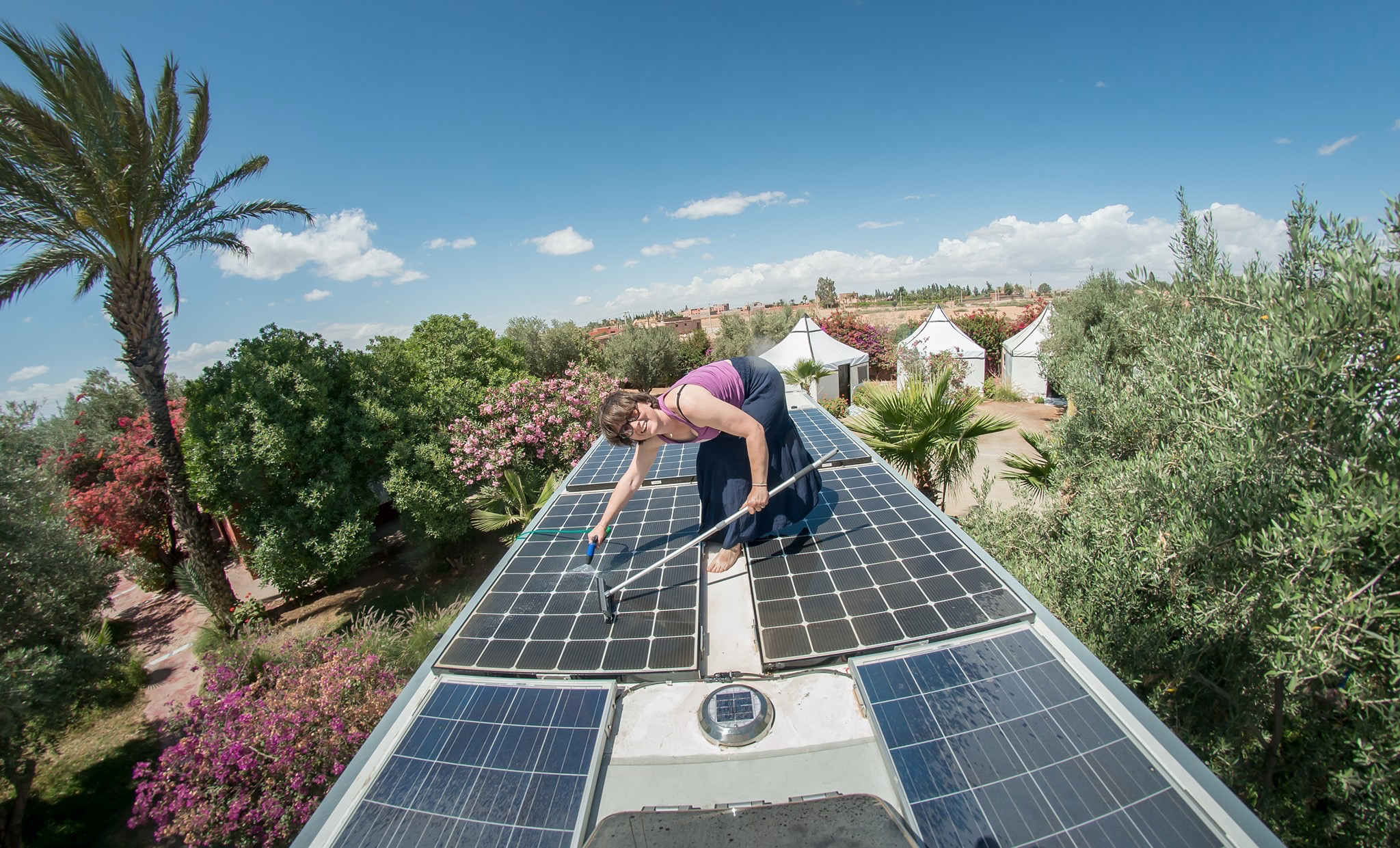 In order to calculate the correct sizing for your needs, both consumption and independence, it will be important to underestimate the real capacity of your system, vice versa you may find yourself chasing the sun’s rays and thus transforming your independence into dependence. concerns us we used a parameter of 33% compared to the normal capacity of the plant, therefore considering an average good day every three, which today seems to us an appropriate value because it reflects the reality of our journey.
In order to calculate the correct sizing for your needs, both consumption and independence, it will be important to underestimate the real capacity of your system, vice versa you may find yourself chasing the sun’s rays and thus transforming your independence into dependence. concerns us we used a parameter of 33% compared to the normal capacity of the plant, therefore considering an average good day every three, which today seems to us an appropriate value because it reflects the reality of our journey.
The sizing of the system
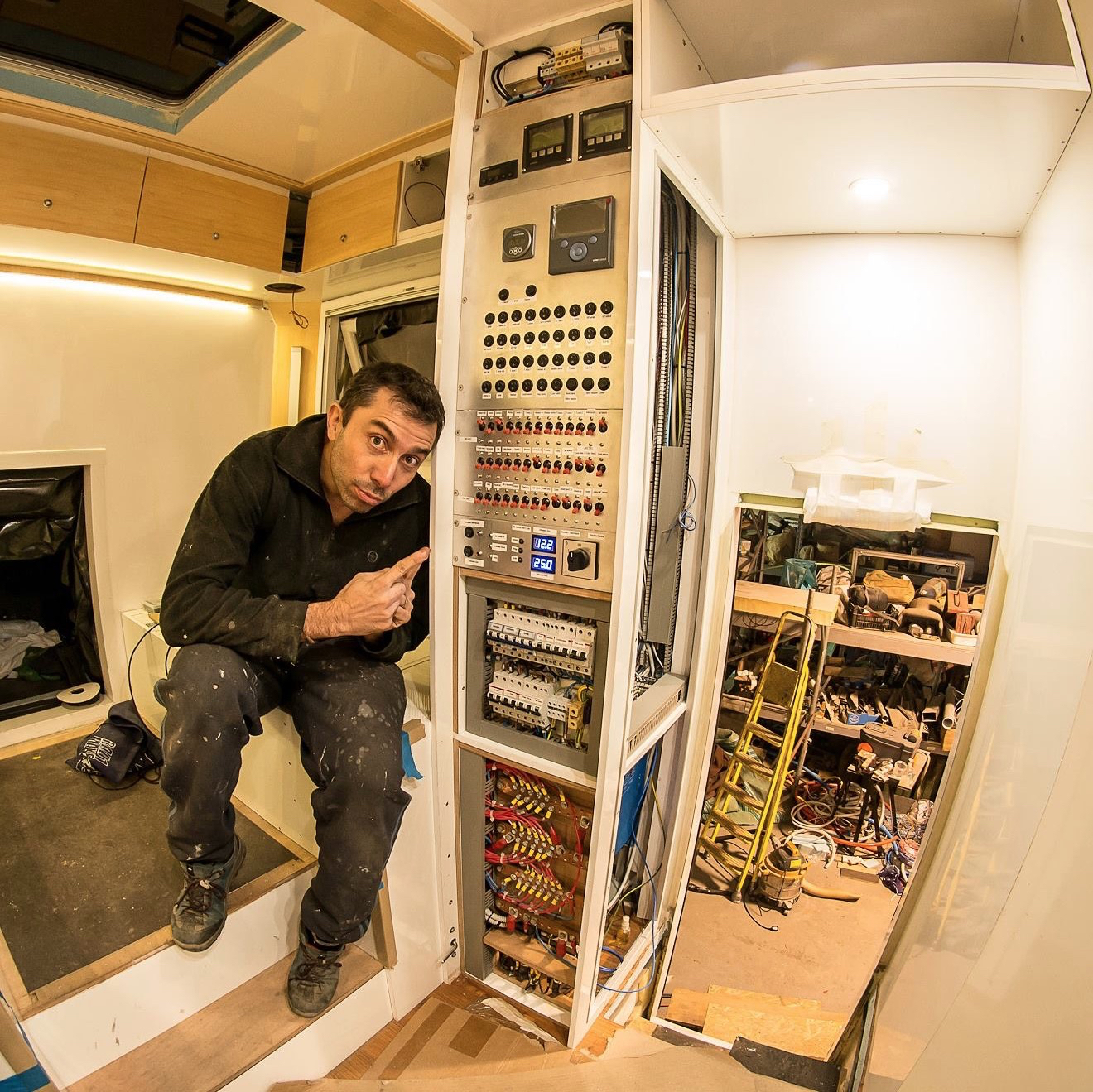
As described in the previous paragraph we understood that we can recharge our batteries one day every three, so we necessarily need things of greater autonomy – compared to the current one – in order to meet the daily needs we have calculated. Let’s see together to calculate what power of batteries we actually need:
- 435 Watt (daily consumption) * 3 (days before a refill) = 1305 Watt.
To get 1305 Watts of power from our 12 Volt battery bank we will have to install a parallel of 4 100 Amp batteries, or use two of 200 batteries. Let’s see the calculations:
- 12 (Volt) * 4 (numbers of batteries) * 100 (Ampere) = 4800 Watt
However, we know that of the 4800 watts we can use only 30% then 1440 Watts. The 1440 Watt made available by the new battery bank guarantee us the required power. Now we are ready with the batteries. Working on 435 watts per day (which do not always use the dryer) we try to calculate what solar power we need. We will install 4 panels of 100 Watt each obtaining a total power of 400 Watt, which delivered for 5 (hours in which the panel can actually work every day) will give us 2000 Watt of free energy. But as we said we have to get back down to earth and then remove the energy we know we will never have available, that is:
- 2000 Watt – 80% (real performance of the panel) = 1600 Watt.
This calculation made us understand that every 3 days (remember 33%) we will have 1600 Watt available to recharge our batteries. Our consumption in three days had been calculated in 1305 Watts, so the 1600 Watts are enough to recharge our battery bank.
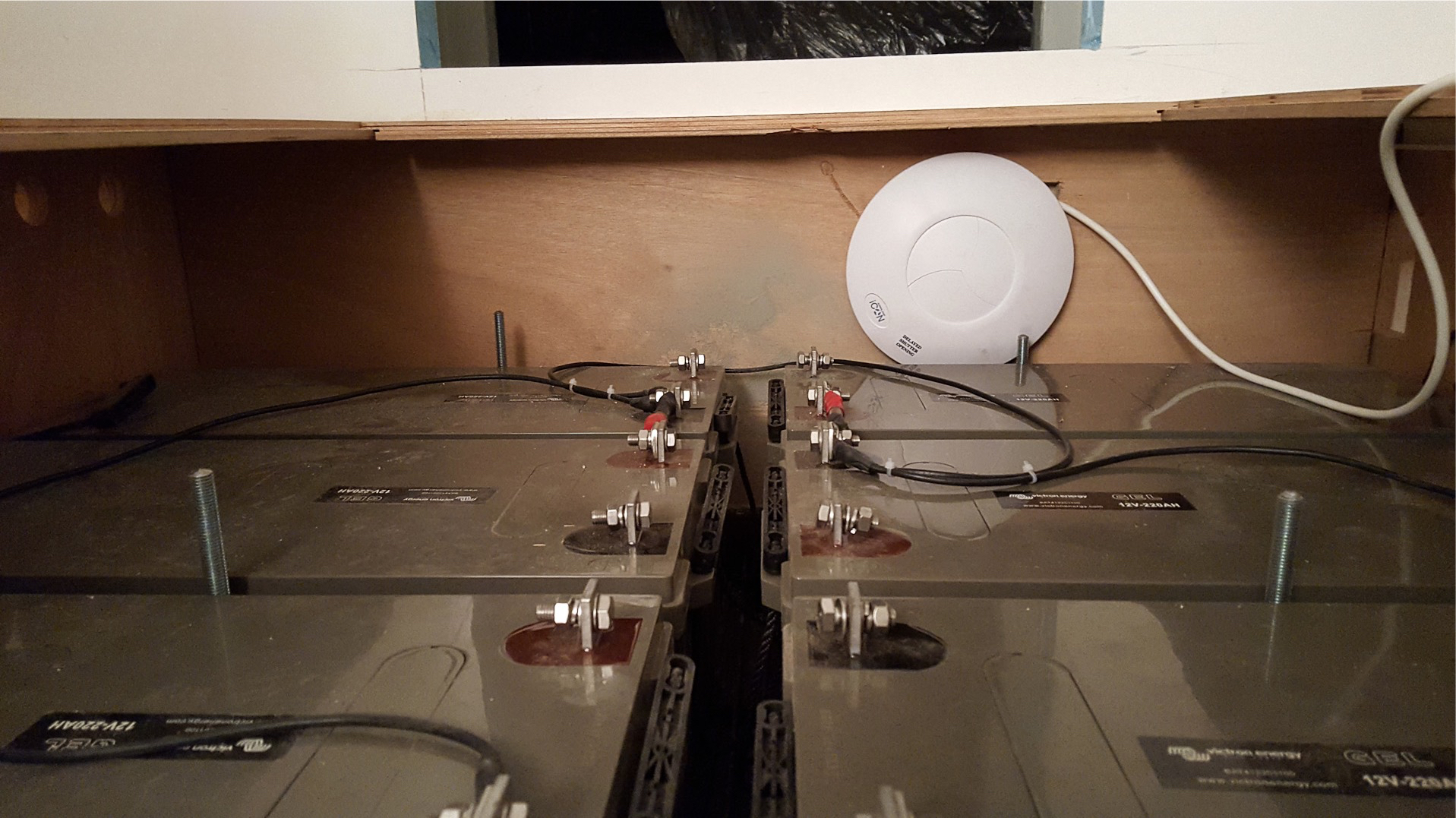
The charge controller or MPPT
A fundamental regulator in the creation of a photovoltaic system is the charge regulator which deals mainly with two things
- Turn the output voltage from the panels into the one suitable for your battery bank, or 12 or 24 volts
- It takes care of supplying the maximum current value possible to the batteries, which is why it is also called “follower”.
The choice of this device is basically given by the parameters of the battery bank voltage and of the maximum current that can be supplied by the string of panels that you will create. In the example we have used until now the MPPT that should be purchased could be the following: The 100 Watt panels supply a current of about 8.3 Ampere each to 12 Volt, assuming to install them in series we will have an output of 8 Ampere at 48 Volt. The regulator that we will have to choose must therefore be able to work with these two values.
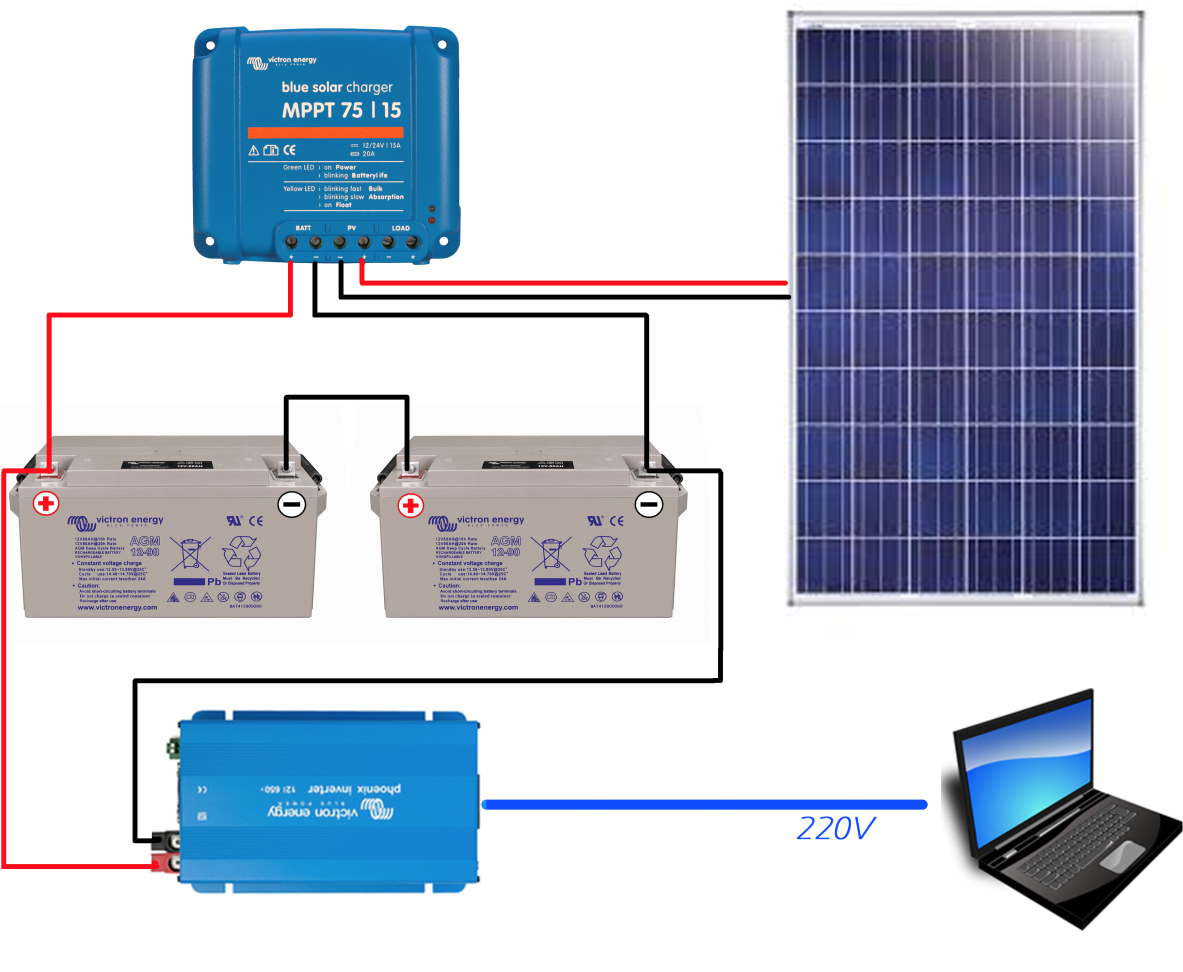
Valentino’s plant
As we have previously said, our Valentino lives mainly on solar energy, because during our trip we want to limit almost totally the costs due to paid parking areas. To give you an idea of what we thought for our mobile home here are some data technicians:
-
4 300 Watt monocrystalline panels 2 150 Watt monocrystalline panels
In total, therefore, we have 1500 Watt of solar energy available which is reduced to 80% (effective efficiency), guaranteeing us about 1200 Watt of power. This is multiplied by the number of hours, ie 5 so we get 6000 Watt every three days (value of 33%) Our battery bank is made up of 8 Victron Energy GEL batteries of 220 Ampere each. In total we have 21120 Watts of power that we can use at 30% and therefore 6336 Watts available. Considered a complete recharge every three days we can congeal 2112 Watts a day without stressing our battery bank. We come to consumption considering only the main ones used daily
- 1700 Watt induction plate that operates on average 20 minutes a day means: 1700 Watts * 0.3 (1/3 of an hour) = 510 Watts.
- Refrigerator 150 Watt per day
- Home automation 100 Watt per day
- 20 Watt autoclave pumps per day
- Computer 170 Watt per day 40 Watt lights (overestimated)
- 10 Watt gray water discharge pumps
- GPS 10 Watt per day Ventilation fans 20 watts per day
- Webasto for hot water 150 Watt (actually used every three or four days)
- Internal Router and Wifi 20 Watt
That ammonant at 1200 watts per day. To these must be added sporadic consumptions, such as sewage discharge pumps, gray water recycling, etc. etc. The capacity of Valentino’s solar panels therefore guarantees the use of additional units such as washing machines, which have an average consumption of 1 kW per cycle or of the oven without stress on batteries.


We will publish more details during our trip, while we hope that this article may have been useful. In case of doubts, questions, or suggestions, do not hesitate to write us!